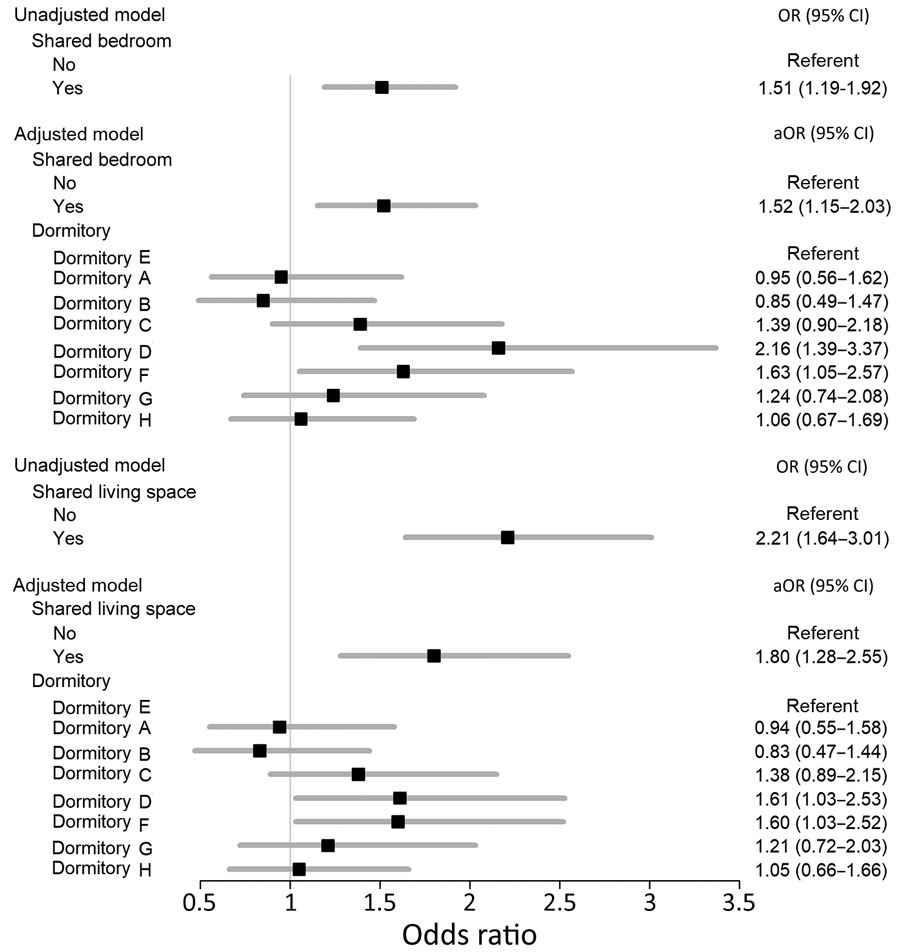Volume 27, Number 11—November 2021
Dispatch
Association of Shared Living Spaces and COVID-19 in University Students, Wisconsin, USA, 2020
Figure 2

Figure 2. Associations between shared living spaces and coronavirus disease (COVID-19) at a university (N = 2,187), Wisconsin, USA, September 2–December 19, 2020. Black boxes indicate odds ratios; gray bars indicate 95% CIs. Models were adjusted for age, sex, race, ethnicity, dormitories, and floor level occupancy (%). Shared living space was defined as one in which >2 students share either a bedroom or suite. Dorms A, B, F, and G housed first-year students. Dorm E was selected as the reference group because it had the lowest semester COVID-19 positivity among on-campus residents. Dorm D is composed of suites of 4 single-occupancy or 2 double-occupancy bedrooms with a shared bathroom, common area, and kitchen. aOR, adjusted odds ratio; OR, odds ratio.